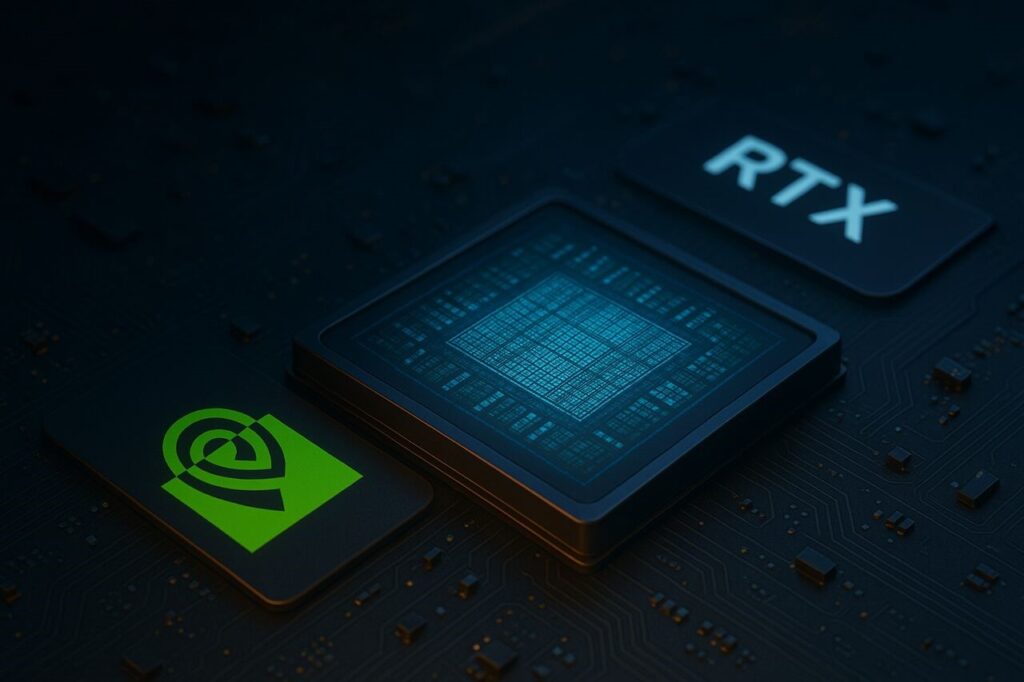How Are OpenAI’s Open Models Optimized for Local Acceleration on NVIDIA RTX and RTX PRO GPUs?
OpenAI’s latest open models are engineered for low-latency local inference, specifically utilizing the parallel processing power of NVIDIA GeForce RTX and RTX PRO GPUs. These models are compiled and fine-tuned using optimization toolchains that harness tensor core acceleration, mixed precision (FP16/BF16), and CUDA-level customizations to minimize inference lag and memory bottlenecks. The implementation enables scalable deployment scenarios ranging from consumer-grade desktops to enterprise-grade workstations, aligning with developer needs for efficient on-device AI performance without relying on remote APIs.
What Is the Role of NVIDIA GeForce RTX and RTX PRO GPUs in Local AI Inference?
1. GPU Parallelism for Large Language Model Inference
GeForce RTX and RTX PRO GPUs utilize thousands of CUDA cores and Tensor Cores to perform matrix multiplications required by transformer architectures in parallel. This architectural design reduces inference time drastically, especially during attention mechanism computations and token generation sequences, enabling sub-second response times on local systems.
2. TensorRT and ONNX Runtime Integration
NVIDIA’s TensorRT SDK, integrated with ONNX Runtime, compiles OpenAI’s models into highly optimized graph formats. This workflow ensures faster load times and efficient memory usage by fusing operations and quantizing weights to half-precision or INT8 formats, maintaining accuracy while maximizing throughput.
3. DirectML and CUDA Acceleration Synergy
RTX GPUs support both CUDA and DirectML backends. OpenAI’s local models dynamically route computations through the most optimal backend available, allowing hybrid environments across Windows and Linux platforms to leverage full GPU acceleration, enhancing cross-platform inference consistency.
4. VRAM Utilization and Model Scaling
High-end RTX PRO GPUs such as the A6000 offer 48GB+ VRAM, enabling deployment of larger models like Llama 3 or Mistral with minimal performance trade-offs. Developers can fine-tune context window sizes and token buffers directly within system memory constraints, enhancing model flexibility.
5. Thermal and Power Efficiency for Workstations
RTX PRO GPUs, optimized for workstation environments, balance thermal design power (TDP) and sustained inference workloads. Passive and active cooling solutions are designed to ensure uninterrupted AI tasks over extended periods, supporting professional content generation, coding assistants, and design tools powered by OpenAI models.
Why Does Local Inference Matter for Developers and Enterprises?
1. Data Sovereignty and Privacy Assurance
Local inference ensures user data never leaves the device, addressing GDPR, HIPAA, and enterprise compliance requirements. Developers can build applications where sensitive data such as financial records or medical history is processed securely and privately.
2. Latency-Sensitive Application Support
Mission-critical use cases like real-time code assistance, voice assistants, or AR/VR interfaces require minimal latency. Locally running OpenAI models eliminate round-trip server delays, offering near-instant responses regardless of internet connectivity.
3. Offline Capability and Infrastructure Independence
Offline model execution removes the dependency on API uptime, rate limits, or bandwidth constraints. Developers working in remote environments or on air-gapped systems retain full access to AI functionalities without cloud infrastructure.
4. Customization and Fine-Tuning Freedom
Open-source deployment allows organizations to fine-tune models on proprietary data, integrate domain-specific vocabularies, and adjust system prompts while leveraging local GPU compute. This flexibility accelerates time-to-market for verticalized AI solutions.
5. Cost-Efficiency Over Cloud-Based APIs
Running models locally on existing RTX hardware eliminates recurring inference API costs. Enterprises deploying at scale can reduce OPEX and increase ROI, especially when operating within environments with existing GPU infrastructure.
Which OpenAI Open Models Are Compatible With Local GPU Inference?
1. GPT-J and GPT-NeoX Architectures
These transformer-based models have been optimized for deployment with NVIDIA acceleration pipelines. Developers can fine-tune them using Hugging Face Transformers and quantize models for 8-bit or 4-bit precision to fit within GPU memory constraints.
2. LLaMA and Mistral Derivatives
Meta’s LLaMA 2 and Mistral open-weight models, supported by OpenAI integrations, are compiled using GGUF and Safetensors formats for fast-loading inference. These models excel in multilingual tasks, code generation, and reasoning, running efficiently on 24GB+ RTX cards.
3. Whisper and CLIP for Multimodal Workflows
OpenAI’s Whisper (speech recognition) and CLIP (vision-language) models run seamlessly on RTX GPUs, enabling voice-controlled interfaces and semantic image search within desktop apps. These models utilize mixed precision kernels to optimize performance.
4. Custom Instruction-Tuned Variants
Developers can deploy instruction-following models locally using LoRA (Low-Rank Adaptation) fine-tuning. This enables lightweight personalization for customer service bots, legal research tools, or medical documentation assistance while leveraging RTX-accelerated inference.
5. OpenFunction Models for Tool-Calling
Tool-augmented inference models from OpenAI, designed for structured output like JSON or function calls, are now compatible with local environments using RTX hardware. These models help automate workflows by triggering code, fetching APIs, or summarizing documents in predefined formats.
How Do OpenAI’s Local Model Advancements Impact the Future of AI Deployment?
1. Shift Toward Decentralized AI Infrastructure
OpenAI’s support for local model acceleration contributes to the broader movement toward decentralized AI, where users and businesses run intelligent systems on-premise rather than depending solely on centralized cloud providers. This empowers sovereign computing strategies globally.
2. Democratization of High-Performance AI Tools
The availability of powerful inference capabilities on consumer RTX GPUs lowers the barrier for hobbyists, indie developers, and researchers. Affordable hardware can now support AI applications once limited to data centers, expanding innovation at the edge.
3. Acceleration of Enterprise AI Adoption
Enterprises with strict compliance, real-time processing, or custom integration needs are rapidly transitioning to on-device models. OpenAI’s alignment with NVIDIA hardware unlocks enterprise-grade capabilities at scale without compromising security or uptime.
4. Ecosystem Synergy With CUDA and PyTorch
OpenAI models benefit from the mature CUDA ecosystem and PyTorch’s growing support for local inference APIs. This synergy fosters innovation in AI frameworks, libraries, and hardware-software co-design, leading to faster development cycles.
5. Increased Emphasis on Hardware-Aware AI Optimization
Model developers are now prioritizing inference speed, memory allocation, and energy efficiency during training. OpenAI’s approach to making open models GPU-optimized encourages a shift toward hardware-aware AI development, where inference performance becomes as important as pretraining scale.
See Also:

